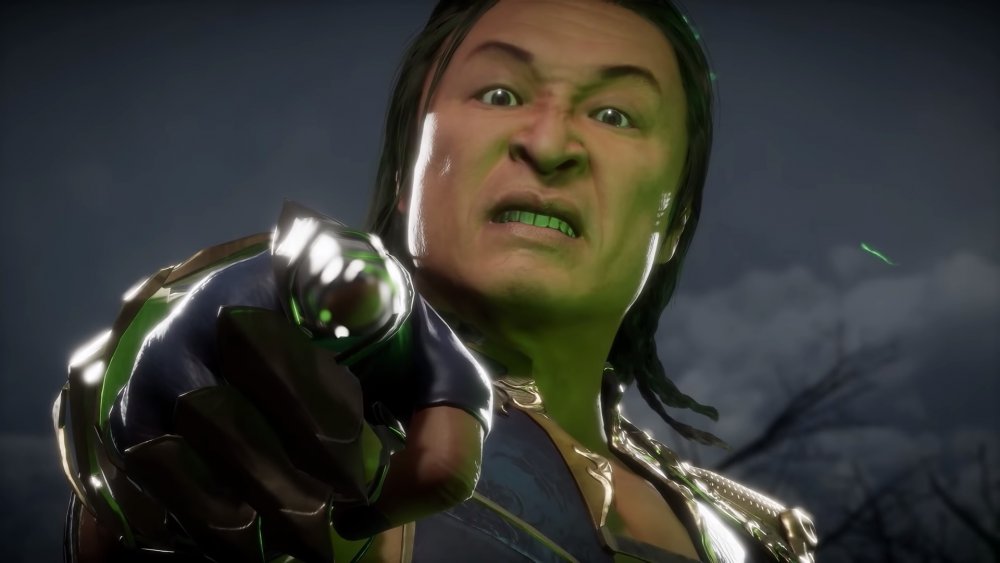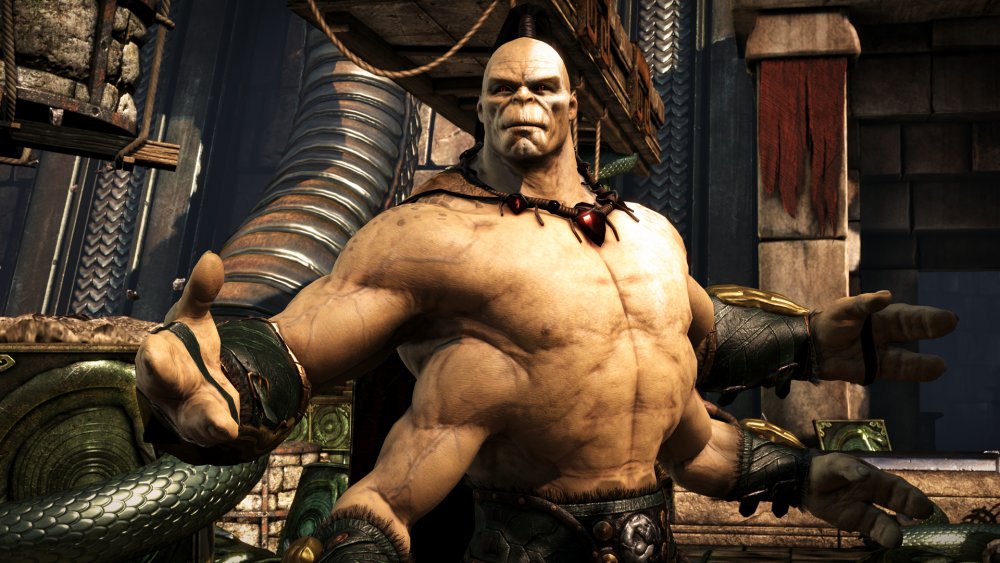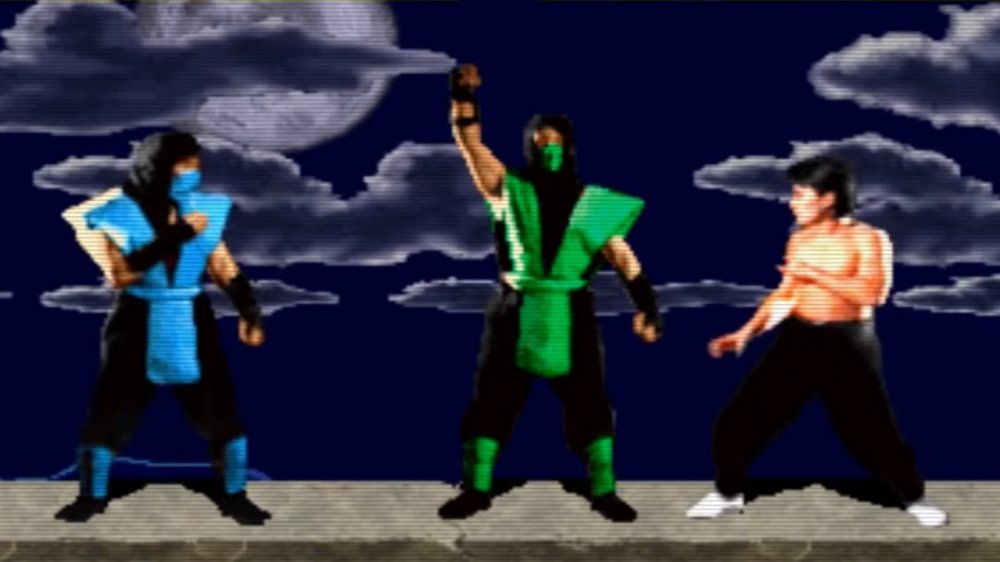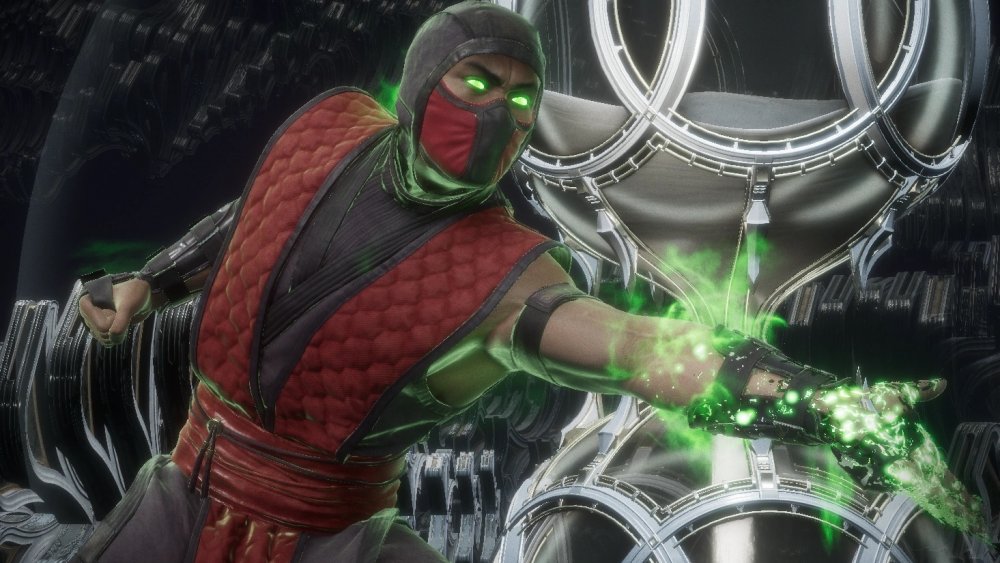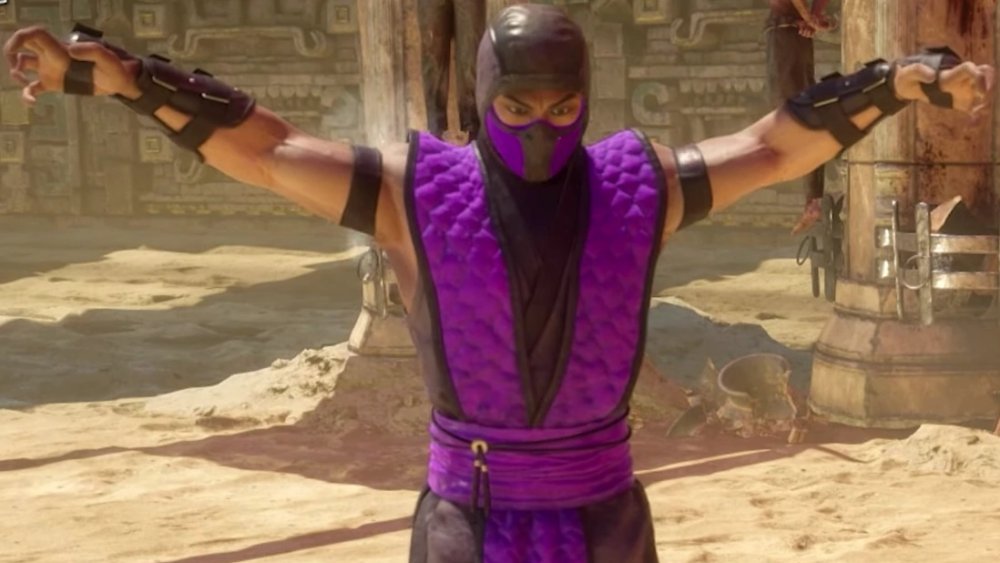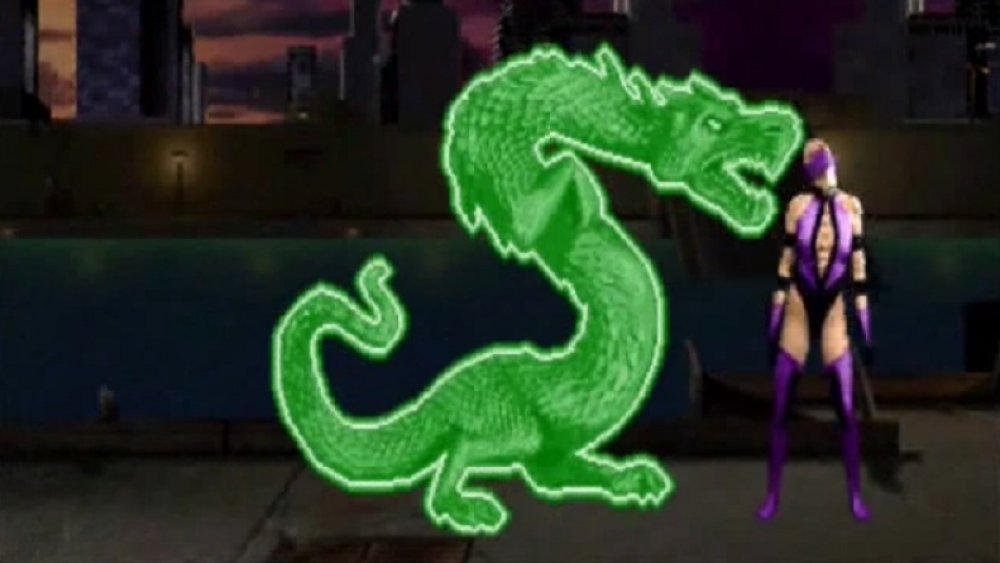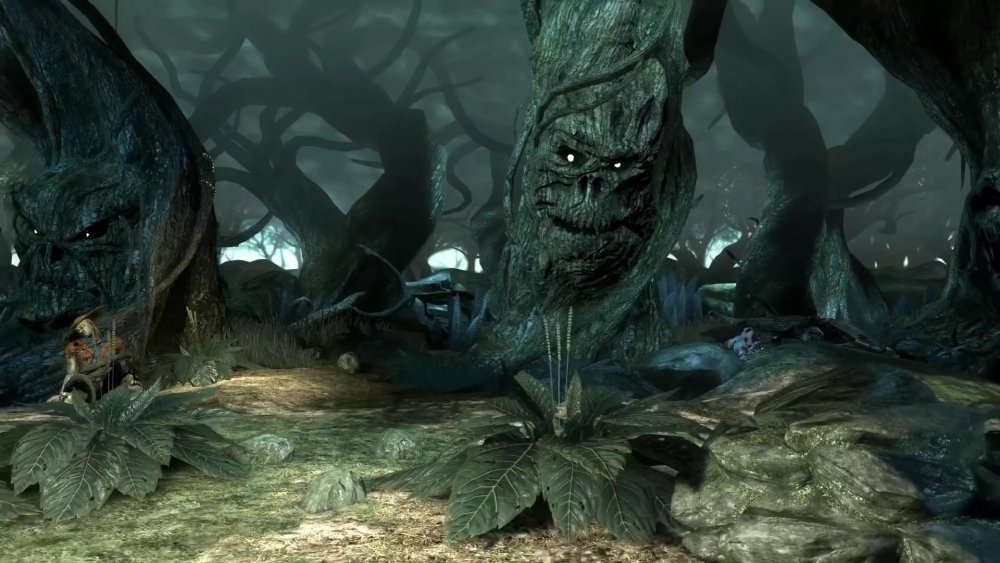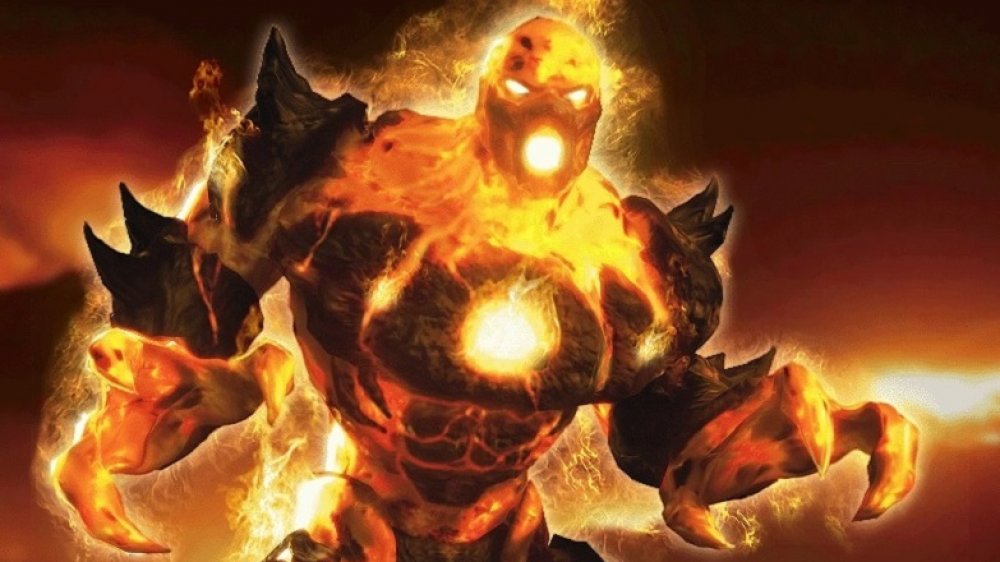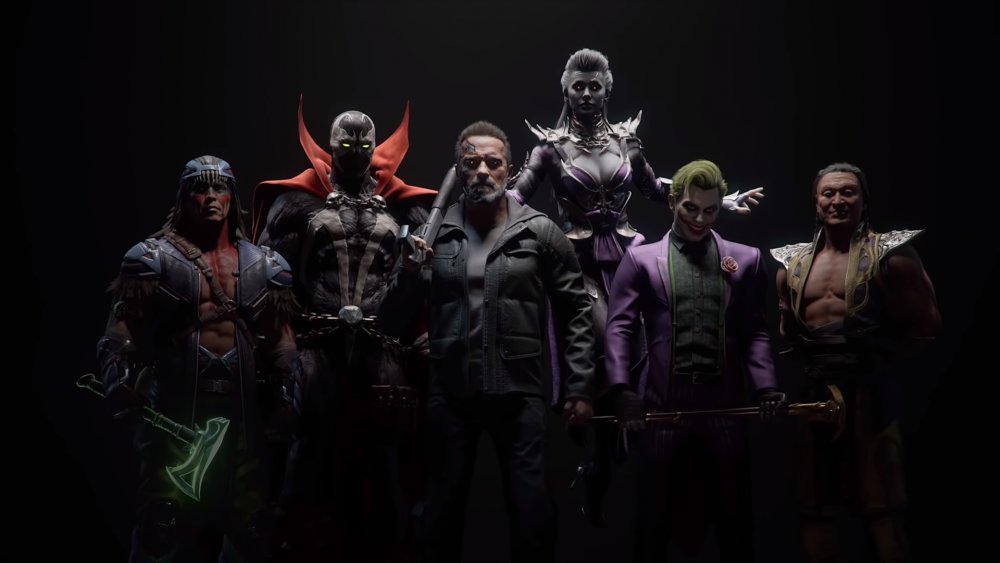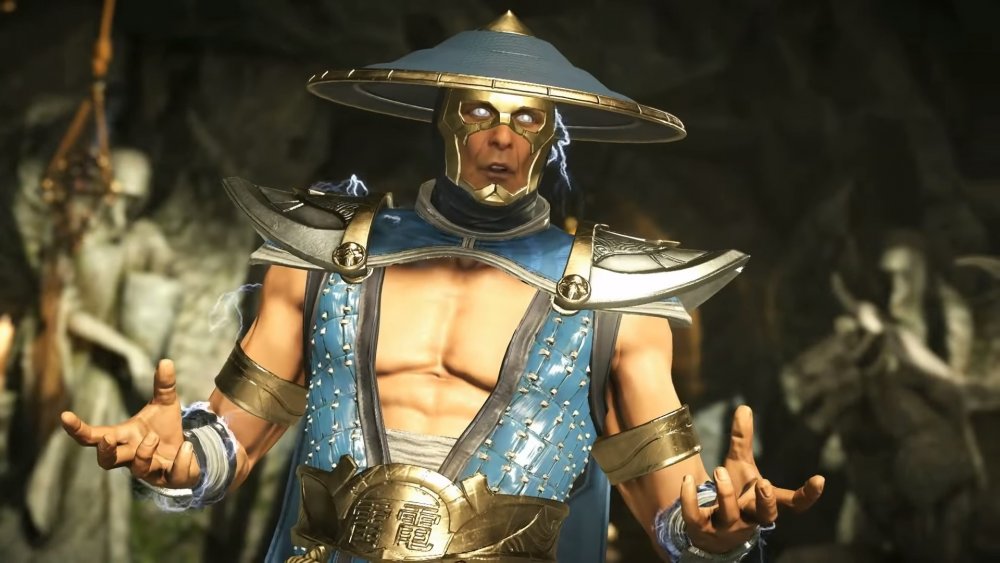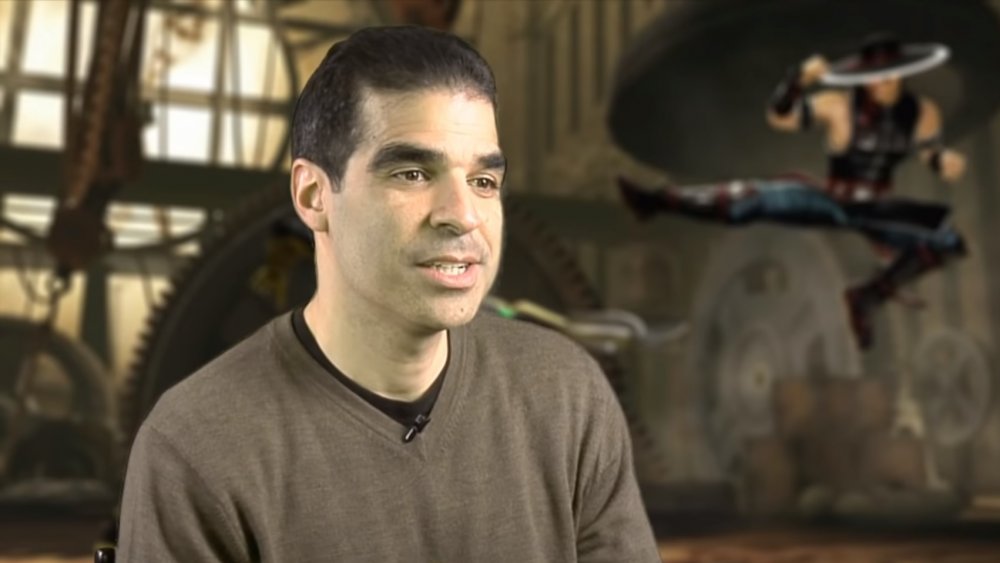Mortal Kombat Myths That Became Reality
Few games get hearts pumping (or forcefully torn out of chests) quite like Mortal Kombat. This ultra-violent fighting franchise has influenced the gaming landscape since day one. It popularized the use of digitized sprites, single-handedly spawned the ESRB, and started the practice of including secret characters who are the subject of rumors and legends.
Since many Mortal Kombat myths began as hearsay, nobody could tell the difference between a glitch and an actual unlockable character, and that's just regarding the benign rumors. Some unscrupulous arcade managers created baseless myths to trick naive children into spending their paper route money. Once in a blue moon, however, a Mortal Kombat myth turned out to be real, either because players had to test their might and patience to unlock a character or because the game's developers were influenced by fan passion and turned rumored features into reality.
Here are some of Mortal Kombat's most famous myths that had more than just a grain of truth to them.
You're the mini-boss now
Mortal Kombat is full of memorable characters such as Liu Kang, Raiden, and Johnny Cage. One combatant, however, stands head and shoulders above the rest: Goro. Unlike the other fighters who were digitized actors, Goro started as a four-armed love letter to stop-motion legend Ray Harryhausen. Goro captured the hearts of players everywhere, and with his fame came rumors that he was an unlockable character. What better way to get revenge on the game's ultimate test of skill, patience, and bottomless pockets than to use him to pummel opponents?
While Goro isn't playable in the original arcade version, word spread players could unlock him on consoles, which isn't true except for one odd exception. Mortal Kombat was ported to literally every console at the time, including the Game Boy. While this port is the worst way to play the game, it features the first instance of a playable Goro. Players who don't want to suffer through that version to play as Goro can always buy Mortal Kombat 10 and shell out $5 for its Goro DLC.
While Mortal Kombat fans eventually got their wish to play as Goro, the wish was seemingly made on a monkey's paw. Gamers either have to play a bad port or participate in a practice more unscrupulous publishers use to nickel and dime audiences. Goro got the last laugh after all.
Sneaky, sneaky saurian sub-boss
In the first Mortal Kombat game, a mysterious green ninja named Reptile would occasionally interrupt the beginning of a match, spout gibberish like "Look to La Luna" or "Tip eht fo mottob," and then disappear off-screen. Rumors about him spread like sentient wildfire. Players theorized he was unlockable and could be caught via his cryptic comments.
After deciphering Reptile's quotes, one rumor surfaced. When shadows fly across the moon in the Pit stage, players could fight him if they won two matches without blocking or taking any damage (i.e., a double flawless victory), as well as ending with a Fatality. It was a daunting, far-fetched task, but that rumor proved true. When performed correctly, players would fight Reptile, and what a fight it was. He was faster than most characters and used an amalgamation of Scorpion's and Sub-Zero's moves. Unfortunately, the "unlockable character" portion of the myth was false, but he returned in Mortal Kombat 2 as a playable character.
Reptile was a stroke of marketing genius. His wily nature ensnared the interest of players and guaranteed they would keep inserting quarters to discover yet another vital clue. Reptile slithered his way into the hearts of Mortal Kombat fans and holds the enviable title of "first secret character in a fighting game."
Glitches that made players see red (characters)
In video games, developers use palette swaps to create new characters and enemies without taking up too much time, effort, or disk space — just copy a model, switch some colors around, and you're 90% done. The Mortal Kombat team abused the heck out of this technique to create several characters, including combatants inspired by palette swap rumors. Two such characters who began life as Mortal Kombat myths are Ermac and Skarlet.
Ermac's origin lies in a shorthand term for macros that catch errors in computer code. In the arcade cabinet, Ermac is listed under Reptile fights, and since most arcade goers aren't fluent in code lingo, rumor of the secret character Ermac spread. Because of this fictional fighter's popularity, the development team brought Ermac to life as a playable character in Ultimate Mortal Kombat 3. Plus, he eventually became a black-garbed psychic ninja mummy.
Skarlet, like Ermac before her, was supposed to be a red-tinged glitchy palette swap of Kitana from Mortal Kombat 2. However, nobody knows if the Skarlet glitch was real, as producer Hans Lo and director Ed Boon have conflicting opinions. It doesn't matter though, since the developers eventually transformed Skarlet into a playable character in the 2011 reboot of Mortal Kombat.
Ed Boon's fake character came to life
While Mortal Kombat is one of the most violent fighting game franchises on the market, nobody can say its developers lack humor. Character intro dialogues are full of jokes. Friendships bring visual gags to the table. The "Toasty!" meme is the stuff of legend. While most players are in on the joke, MK's developers sometimes play pranks on gamers, which is how one character started.
To attract players, arcade cabinets use clips of impressive canned footage in what is known as "attract mode." A game has to put on a show to convince players to part with their hard-earned quarters, after all. Ultimate Mortal Kombat 3's attract mode features a purple ninja named Rain laying the beat down on MK's big bad Shao Kahn. Since Rain never appeared in previous MK games, players flocked to the cabinet, hoping to unlock or fight the new character.
Of course, it was all a hoax. Ed Boon revealed Rain was originally nothing more than a red herring and a reference to the Prince song "Purple Rain." The character was never supposed to appear in the game, but the positive reception to Boon's trick convinced developers to implement Rain in Ultimate Mortal Kombat 3's console ports. Well played, Boon. Well played.
Unleash your inner animality
Mortal Kombat's standout feature is the infamous Fatality finisher, where the correct button input results in a brutal on-screen murder. Of course, the development team eventually expanded on the Fatality system with alternate finishers, including Babalities, Quitalities, and Friendships. One finisher in particular, Animality, owes its existence to a rumor.
While Animalities were introduced in Mortal Kombat 3, myths spread as early as Mortal Kombat 2 that Sub-Zero could transform into a polar bear and maul opponents to death. This rumor isn't true, but it did not stop a strategy guide from publishing a faked image of the "ability" in action. Plus, the whole "fighters turning into animals" thing wasn't far-fetched, since MK2 introduced Liu Kang's famous dragon transformation Fatality. Still, the rumors were popular enough for the dev team to include a line of actual animal transformation finishers in Mortal Kombat 3.
Hilariously, the developers pulled a fast one at the last minute and made Scorpion transform into a penguin for his Animality instead of, you know, an actual scorpion. At least the penguin lays explosive eggs.
The trees have faces, so why can't they eat people?
Some players can't pull off Mortal Kombat's Fatalities — which isn't an insult, mind you — but the game's developers have the perfect solution: Stage Fatalities. Can't electrocute combatants as Raiden? Uppercut them off The Pit and into a bed of spikes. You can even throw fighters into the Living Forest's trees and watch the bloodbath, although that didn't used to be the case.
When Mortal Kombat 2 released, rumors spread that the faces of the Living Forest's trees weren't just for show — players could toss enemies into them for a tasty bone meal (and blood pudding) snack. Of course, that claim was patently false, but being the eccentric creators they are, Mortal Kombat's developers transformed the rumor into an actual Stage Fatality for the reboot of Mortal Kombat.
Moreover, the Living Forest wasn't the only stage to receive a Fatality facelift. While the Dead Pool featured its own Stage Fatality, the many chained hooks inspired rumors that players could spear opponents with the hooks and unlock a secret area. Although the rumor was obviously hearsay, the MK team took inspiration from the myth to create an environmental puzzle in Mortal Kombat: Shaolin Monks. Simply knock enemies into the hooks to progress.
You could say that Mortal Kombat myths have the developers hooked.
From background character to big bad
For most characters, it's pretty obvious where the brains behind Mortal Kombat take inspiration. Liu Kang is a love letter to Bruce Lee; Raiden is inspired by Lightning from Big Trouble in Little China; and Bo' Rai Cho is an excuse to insert Drunken Boxing (which actually doesn't involve drinking alcohol) into Mortal Kombat. But then there are characters like Blaze, who are the culmination of fan-made myths.
The Pit II stage of Mortal Kombat 2 has two characters who "fight" in the distance. These characters are palette swaps of Liu Kang — one wears green pants and the other is on fire. Myths swirled around these characters, their identities, and whether or not they were playable. While the green Liu Kang clone received the moniker of Hornbuckle, the other one was nicknamed Torch. Of course, all the rumors in the world didn't make these characters unlockable in MK2.
While nothing ever became of poor Hornbuckle, Torch was eventually implemented in Mortal Kombat: Deadly Alliance as the playable character Blaze. And, in Mortal Kombat: Armageddon, he was upgraded to final boss status. It's not every day a background character makes the leap to big bad boss, but Blaze demonstrates anything is possible with enough fan fondness and developer dedication.
A huge Mortal Kombat 11 leak was mostly right
Mortal Kombat 11 is the latest entry in the Mortal Kombat lineage. Its gameplay is tight and vicious, and the story is a freaky-like-Friday explosion that bicycle kicks everything you know about time travel into Outworld. The game also features a sizable roster of DLC characters. However, these kinds of fighters should ideally remain surprises until they are officially announced, which didn't happen.
Some Reddit users acquired early copies of Mortal Kombat 11 and leaked DLC characters like Shang Tsung. Most gamers knew the iconic sorcerer would return, once again played by Cary-Hiroyuki Tagawa, before the leak was posted. But the post featured a slew of other characters as well, including Nightwolf, Sindel, Spawn, Joker, the Terminator, Fujin, Sheeva, and "Ash." Virtually everyone assumed "Ash" meant Ash Williams from Evil Dead.
Since leaks are rarely reliable, MK fans were hesitant to believe these claims. Come May 31, 2019, however, NetherRealm revealed Nightwolf, Spawn, and Sindel. Then on Aug. 21, a second DLC trailer unveiled Joker and the Terminator.
For once, a leak was accurate, and fans were suddenly confident Ash from Evil Dead was definitely coming to the game. But in early May 2020, NetherRealm Studios dropped a Canada-sized bomb with the Mortal Kombat 11: Aftermath DLC trailer. Fujin and Sheeva were announced as new characters, rounding out the rest of the prior leak. Instead of Ash, though, NetherRealm chose to add RoboCop instead.
At least Aftermath will feature the glorious return of Friendships.
Another professional fighter enters the voice actor ring
Video games have a revolving door relationship with voice actors. For every Nathan Drake who retains one voice actor throughout the franchise, there are five Chris Redfields who swap actors every game, and Mortal Kombat falls in the latter category. Sonya Blade is a prime example, as she has been voiced by numerous voice actresses, including Tricia Helfer. Since Helfer voiced Sonya Blade in Mortal Kombat 10, many expected her to return for round two in Mortal Kombat 11.
Deep within the recesses of TheNerdMag, readers can find a link to a now-removed Reddit post that leaked a treasure trove of MK11 information, including its cover art and the name of Sonya Blade's new voice actress. Instead of a dedicated vocal thespian who honed her craft to portray characters of varying demographics, the development team reportedly hired professional fighter Ronda Rousey. Granted, she kicks butt as Luna in The Expendables 3, but there is a sizable gap between live acting and voice acting, so many gamers didn't believe the news.
Of course, the leak was legit, as Rousey voices Sonya Blade in MK11, and is the odd woman out in a sea of the game's long-standing voice actresses like Jennifer Hale, Sara Cravens, and Kelly Hu.
Continuing the crossover of the century
Mortal Kombat vs. DC Universe spun the comic and video game worlds on their heads. A crossover almost everyone wanted but was too afraid to request, the game demonstrated that Ed Boon's team could make fighting games other than Mortal Kombat (sort of), and paved the way for Injustice: Gods Among Us. While Injustice takes place in its own continuity, its developers couldn't let go of their Mortal Kombat roots and inserted Scorpion into the game as DLC. This opened the floodgates for more cross-dimensional DLC in the sequel Injustice 2.
Gamers waited on pins and needles for news of Injustice 2's DLC, and when the trailer hit the Internet, jaws dropped. Scorpion wouldn't return but instead was replaced by his best frenemy Sub-Zero. Moreover, the trailer finished with silhouettes of future characters, including someone wearing a familiar bamboo hat.
Immediately, the internet exploded in speculation. Was the character Raiden or possibly a similar DC character with lightning powers? The general consensus was yes, and gamers didn't have to wait long for the next DLC pack reveal, which confirmed Raiden was ready to rumble in Injustice 2. While Hellboy stole the spotlight in that trailer, it at least confirmed Sub-Zero wouldn't be the only Mortal Kombat character in a world of capes and criminals gone sideways.
When a menu evades discovery for 20 years
Developers usually hide debug menus in their games. These menus let people access secrets and game information never meant for mortal eyes — or at least the average player. While these menus are usually common knowledge, their access and content are the subject of myths and legends, especially in Mortal Kombat.
Ever since Mortal Kombat cabinets hit arcades, rumors swirled of a secret debug menu known as the EJB Menu (EJB is short for Edward John Boon). Many gamers suspected the menu existed, but nobody could figure out how to access it. In 2015, however, someone discovered a specific series of button presses that let them access the hallowed EJB Menus for Mortal Kombat 1, 2, and 3, as well as Ultimate Mortal Kombat 3.
The menus contain quite a few standard inclusions, such as game audits to test for errors, character endings, and the ability to enter high score initials (now we know why some cabinets feature impossible scores). They also feature a Krypt's worth of development secrets. Those who access the EJB Menus can see unused sprites for Goro and Shang Tsung, unused Shao Kahn animations, evidence Motaro might have been planned to be playable, and a Galaga-styled mini-game.
Was it worth the wait? Yes.

